| 01-11-2017 | Lionel Pavey |

Reading yesterday’s article about Fintech banks reminded me that, in the last few weeks, I had seen articles in the news about the growing interest in providing banking services by so-called Bigtech companies. Bigtech is defined as established “platform” players such as Amazon, Google, Alibaba and Paypal. These companies are already providing finance to small businesses – Amazon has already lent USD 3 billion to online merchants.
Whereas Fintech startups are trying to find funding for their ideas, they do not have a large supply of capital to truly offer large scale lending facilities. They are well suited to participate in peer-to-peer lending initiatives and can certainly show established banks how to do things in a new way, but they do not have the true scale to compete against banks. Bigtech companies, with their vast cash reserves and huge databases, present a very serious problem for existing banks.
Bigtech already collect and analyse data from all their clients. This gives them a unique insight in how to review and redesign the processes for banking, allowing for faster services, reduced costs and reaching a critical mass for trading on an electronic platform.
According to research from consultants McKinsey & Company “Seventy-three percent of U.S. millennials say they would be more excited about a new offering in financial services from Google, Amazon, Paypal or Square than from their bank — and one in three believe they will not need a bank at all”. Platform companies therefore appear to have a very strong and loyal relationship with their customers.
Japan’s largest online retail marketplace – Rakuten Ichiba – offer their customers:
- Loyalty points and e-money usable at hundreds of thousands of stores, virtual and real.
- Credit cards issuance to tens of millions of members.
- Financial products and services that range from mortgages to securities brokerage.
- Run one of Japan’s largest online travel portals.
- Instant-messaging app, Viber, which has some 800 million users worldwide.
This is a very comprehensive list of what are, basically, supporting services to their main function as a marketplace. Banks offer traditional services with little or no additional services.
Where can Bigtech make a difference in the current banking model?
All online marketplaces bring both buyers and sellers together. Most sellers are companies that can be classed as SME (Small and medium-sized enterprises). In the current market SME’s are experiencing difficulties arranging finance. A survey conducted by the Asian Development Bank (ADB) concluded that there is a gap in trade finance – based on bank rejections on applications for trade finance – of about USD 1.5 trillion. SME’s make up around 75 per cent of that total. Furthermore, 60 per cent of companies that responded, stated that rejection led to losing trade. Realistically, if 10 per cent of those rejections had been financed, that would lead to an increase of 1 per cent in staffing levels for SME’s worldwide.
Trade finance is a special form of banking. It provides finance for a relatively short time – the average tenor is less than 180 days. It is a crucial form of finance as shipping goods around the world places a great strain on working capital – all the costs are upfront and the goods are only paid for after receipt. Any form of lending entails risks and for trade finance a good source of information can be obtained at the International Chamber of Commerce (ICC). This organisation is responsible for the business conduct codes for international trade. They analysed data between 2007-2014 with an exposure of USD 7.6 trillion. Defaults for short-term finance for import/export stood at 0.06%.
Providing trade finance is complimentary to online marketplaces and certainly an area where Bigtech firms can increase their presence in the financial industry. With all their data, they are better equipped than a bank to analyse the financial health of an export company. They can see how many orders have taken place, their geographical distribution, their trade value etc. They are also able to offer finance to buyers – their data is also available to Bigtech fims.
Bigtech companies have the means to take on banks; they have the data; knowledge of the marketplace; work completely in an online environment; are open 24/7 and are better known and regarded by young people. The opportunities are there – the question is how much of the supply chain do they want to influence?
When I first started in banking I worked in import and export departments. It provided a good insight into how an economy really works. I was raised on the South coast of England and, as a child, regularly played around the local commercial harbour. I still recall the smell of fresh timber and casks of Sherry and Port. The harbour was the gateway to the world; it was where adventures started. I still live on the coast – some things never change.

Lionel Pavey
Cash Management and Treasury Specialist


 Last week I received a call from one of my clients. Over the last years, I found several members for their team. Given the transition they are in, they were looking for benchmark information to shape their treasury team and make it future proof. This has kept me thinking and I started gathering information in order to give a proper answer. As to be expected, there is no standard template resulting in an easy answer. Even for more evolved job types like sales or accounting this is a hard question, corporate treasury is too young and small for sound statistics.
Last week I received a call from one of my clients. Over the last years, I found several members for their team. Given the transition they are in, they were looking for benchmark information to shape their treasury team and make it future proof. This has kept me thinking and I started gathering information in order to give a proper answer. As to be expected, there is no standard template resulting in an easy answer. Even for more evolved job types like sales or accounting this is a hard question, corporate treasury is too young and small for sound statistics.
 Na de vorming van de euro is het toezicht op financiële instellingen en markten geïnternationaliseerd. Hierbij is het logisch om een ‘level playing field’ binnen de eurozone te realiseren om reguleringsarbitrage te voorkomen.
Na de vorming van de euro is het toezicht op financiële instellingen en markten geïnternationaliseerd. Hierbij is het logisch om een ‘level playing field’ binnen de eurozone te realiseren om reguleringsarbitrage te voorkomen.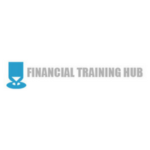
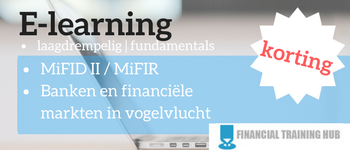 Ontvang via treasuryXL korting op deze e-learning en/of de
Ontvang via treasuryXL korting op deze e-learning en/of de  PSD2 (Payment Services Directive) is an extension on the existing PSD within the EU. The objective is to increase competition in the payments industry, whilst increasing access from non-bank firms. This should lead to standard payment formats, infrastructure and technical standards – at first glance an improvement for consumers. However, there appears to be a particular threat to privacy and the threat of third parties gaining excessive access to personal data.
PSD2 (Payment Services Directive) is an extension on the existing PSD within the EU. The objective is to increase competition in the payments industry, whilst increasing access from non-bank firms. This should lead to standard payment formats, infrastructure and technical standards – at first glance an improvement for consumers. However, there appears to be a particular threat to privacy and the threat of third parties gaining excessive access to personal data.
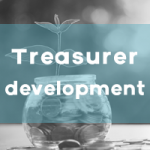

 Zonder banken en financiële markten zou onze huidige economie en welvaart niet mogelijk zijn. En of u het nu leuk vindt of niet, banken waren en zijn onmisbaar voor onze moderne maatschappij. Iedereen doet, al dan niet bewust, dagelijks zaken met of via banken. Sinds de jaren ’80 heeft er een ongekende schaalvergroting plaatsgevonden in de financiële sector. Door deze schaalvergroting hebben banken zich ontwikkeld tot gigantische financiële supermarkten die een zeer uitgebreid aantal financiële diensten en producten aanbieden. Banken zijn tegenwoordig IT-bedrijven waar een grote groep specialisten werkt met beperkte financiële vakkennis.
Zonder banken en financiële markten zou onze huidige economie en welvaart niet mogelijk zijn. En of u het nu leuk vindt of niet, banken waren en zijn onmisbaar voor onze moderne maatschappij. Iedereen doet, al dan niet bewust, dagelijks zaken met of via banken. Sinds de jaren ’80 heeft er een ongekende schaalvergroting plaatsgevonden in de financiële sector. Door deze schaalvergroting hebben banken zich ontwikkeld tot gigantische financiële supermarkten die een zeer uitgebreid aantal financiële diensten en producten aanbieden. Banken zijn tegenwoordig IT-bedrijven waar een grote groep specialisten werkt met beperkte financiële vakkennis.
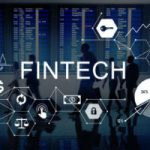

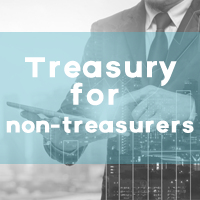 It has always been our mission to promote Treasury as a profession and to increase the awareness of Treasury within business. Currently there are more education choices for students to study and appreciate Treasury, but we still felt there was a gap – knowledge for anyone who was genuinely interested in learning more about Treasury.
It has always been our mission to promote Treasury as a profession and to increase the awareness of Treasury within business. Currently there are more education choices for students to study and appreciate Treasury, but we still felt there was a gap – knowledge for anyone who was genuinely interested in learning more about Treasury.